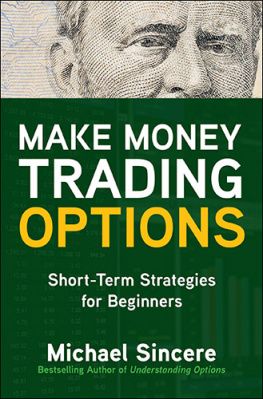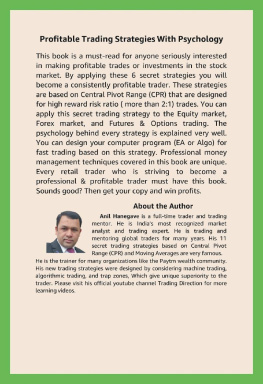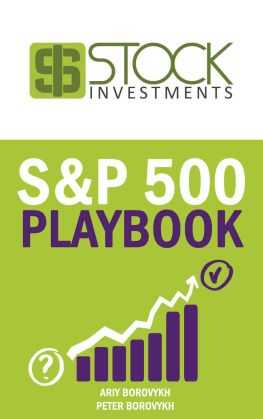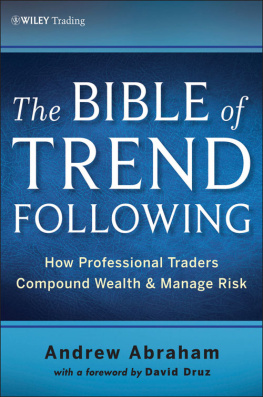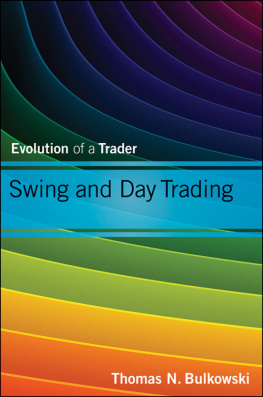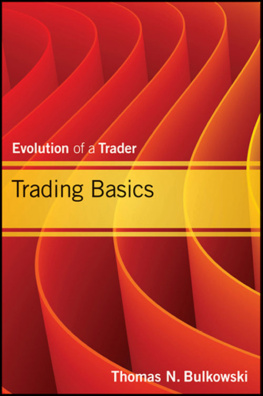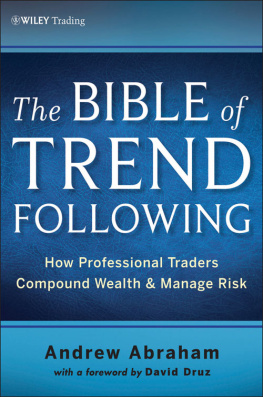Contents
Chapter 6. 59
Chapter 21. 248
Trading the Trends
Introduction
The greatest investors, traders, and speculators of all time have one thing in common.
They understand the market does not always go up, they recognize the market moves in trends and cycles, and they capitalize on that knowledge.
~ Fred McAllen
Understanding how the stock market trends and cycles work is paramount to the success of every individual trader and investor. Experiencing the losses of the past does not have to repeat itself over and over. By recognizing the changes in trends as they are occurring, the trader and investor can protect and preserve their capital while profiting in any market environment.
To give the investor and trader the most comprehensive learning experience, this book encompasses the actual trading decisions and strategies used in both up and down markets. Bear market and sideways market strategies are traded, including trading the bull market beginning in 2009 and exiting at the highs in 2011. The decisions for each entry and exit are shared in detail to give the investor and trader a broad understanding and valuable knowledge for future market cycles.
Weve all heard about the most memorable moments in stock market history like the great market crash in 1929, Black Monday crash in 1987, the brutal bear markets in 1973, 2001, 2007, and many others as well. Many investors experienced the most recent of these events firsthand.
But what is missing from these moments in history is what the market was doing just before each of these events occurred. Each time, the market gave early warning to those who listened, and the best traders and investors acted on those warnings to reap the returns and avoid drastic losses.
It doesnt matter if the next event to happen turns out to be a major market correction, a bear market, or an upturn leading to a new bull market run. The key factor is when the market begins to move in either direction there are plenty of early signs for the astute investor or trader to recognize.
By understanding how the market sends the warning signs, listening to what the market is saying, and interpreting it correctly, the individual investor can then safely enter or exit at times of very low risk with the potential for high return.
With the tools, strategies, knowledge, and trading experiences shared in this book, the individual investor and trader will learn to recognize the market changes early as the thoughts of the trader are explained in detail. These decision processes are explained as the market changes are occurring. And as the investments, trades, and strategies change with each market cycle, the entry and exit of each trade and investment become another learning experience.
To some, the up and down cycles of the market seem random, or haphazard, and believe its actions cannot be predicted or explained. This is simply not the case. This book will illustrate how profitable opportunities present themselves and protection of investment capital from devastating losses can be easily recognized. This knowledge will make the landscape of the trading and investing world much clearer.
The knowledge Ive gained from experience and the understanding of the market have provided valuable lessons and tools to enable the individual investor and trader to become successful.
These experiences are shared throughout the book and are explained as the decisions are made.
You will learn:
Market knowledge to enable grasping the big picture
Technical analysis as it is used in finding entry and exit points for every investment or trade
How to recognize market changes and capitalize on those changes
Defined rules to follow in deciding to enter or exit a trade or investment
Strategies to protect your capital at all times
Strategies to make money in trending markets and market declines
As an active investor and trader, it is my goal to give the individual investor every tool necessary to make their own investing and trading decisions while adhering to simple and successful time-tested techniques.
You will learn to make good, informed decisions for entering an investment or trade, how to manage it, how to find the lowest risk opportunities, and how to protect your capital at all times.
You will learn many successful strategies in this book, and those strategies will change as each market environment changes. This experience will enable you to recognize future market trends and cycles and prepare you in your quest for stock market and investing profits.
~Fred McAllen
Chapter 1
Market History
Trend Trading
Why in the world would anyone want to Trade the Trends? Weve all heard the sales pitches that claim the market has averaged a 10% per year return for the past 70 years, 80 years, or whatever. Sure it has. Just look at a stock chart of the past 70 or 80 years and its easy to see. So why bother with trend trading when all you have to do is buy-and-forget.
It sounds simple. If you had invested in good quality investments 50 or 60 years ago and held them for long periods of time, then you would now be independently wealthy. That is, if you didnt buy and hold Edison Records, TWA, UAL, Bethlehem Steel, Enron, or Polaroid. And even if you avoided these companies and hundreds of others that went bankrupt, you might be too old to enjoy your wealth, have one foot in the grave, or may already be there. But hey, rest assured, or rest in peace, your heirs will be most appreciative if you were fortunate enough 50 years ago to make wise investment decisions.
Investment firms and their ever-expanding sales force consistently encourage the investor to just buy-and-hold. They make it sound so simple, especially considering that common retirement planning scenarios all promise if one just puts a few eggs in a basket, then 20 years later a chicken farm will magically appear.
Buy and Hold
Although theoretically sound and well intentioned, the buy-and-hold strategy is very difficult for investors to apply. Why? It is a little like telling someone that the way to walk from Los Angeles to New York is simply to put one foot in front of the other until you arrive. You cant argue with the instructions, but can anyone really do it? The formula omits too many important details.
For instance, during a long term bull market like the one from 1982 to 2000, the buy-and-hold philosophy worked well. But during long-term trading range markets, it does not. The basic concept behind buy-and-hold is the idea that when investors try to jump in and out of the market, more often than not, they buy at the top and sell at the bottom. This is likely true when the investor has no market knowledge and has no trading and investment plan.
But a wise investor has trouble with buy-and-hold because they know the perils of waiting to see what happens. As simple as most investment salespeople would like it to sound, its just not that simple. Why? Because the market does not always go up, at times it goes down, sometimes severely, and other times it goes nowhere. But fortunately, history does repeat itself. And it becomes clear by taking a closer look at market history.


